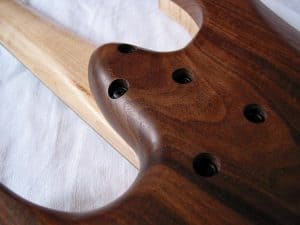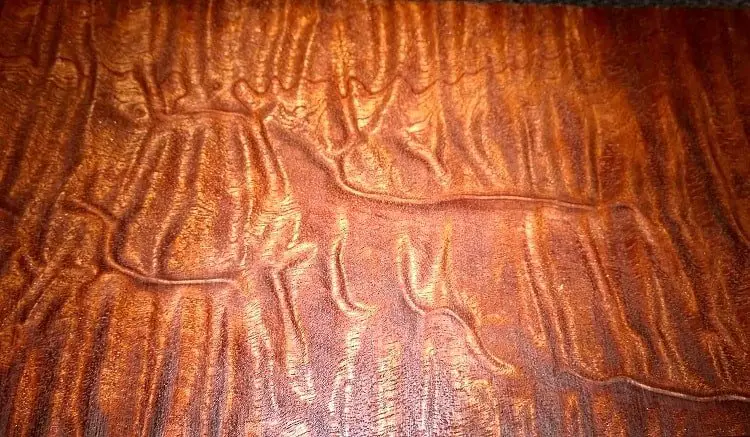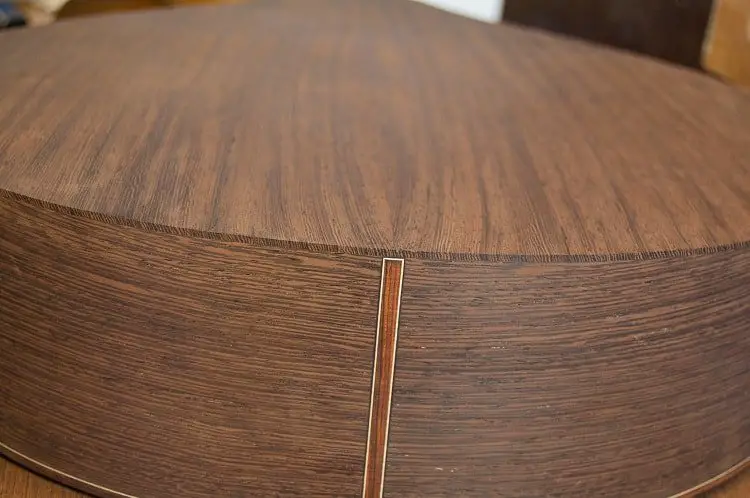 The wood that is a basic construction material for a guitar, whether it’s electric or an acoustic, is a crucial trait to consider before buying a new instrument.
The wood that is a basic construction material for a guitar, whether it’s electric or an acoustic, is a crucial trait to consider before buying a new instrument.
When choosing a type wood to construct guitars out of, the main importance is to really know how it can affect the different traits of the instrument when finished.
[su_note note_color=”#fefec5″]Characteristics of different types of wood vary and each affects the instrument in its particular way, and here we will mention the best wood for a guitar.[/su_note]
Appearance
While tone and sound are most important traits, after all, the appearance is what everyone will truly notice, at the very beginning. Also, you can really expect different types of wood to sound and look in a specific way.
It’s worth mentioning that there are some minor nuances and traits that can be altered too, depending on the areas of the tree origin, like color, weight, shade, grain pattern, and density.
Density and weight for the acoustic and electric guitar
These characteristics heavily influence the tone and are crucial to the performers. The material for acoustic ones is chosen far differently than for the electrics. Different types of wood are widely used in the case of sides and backs, the bracing, and the top. Each part is important for the sound of the guitar.
With electric ones, the heavier and stronger the wood, the more articulate and brighter the guitar will sound, and that also makes for some high-quality bass guitar. Woods that are in the middle are the most popular and praised for almost all electric guitars, because of the rich tone they produce with some nice sustain.
Finishing
How a material looks when finished and oiled will also clearly affect the appearance of the guitar, which can have some influence on the price.
Perhaps, this is not so crucial as its sheer sound, and also the luthier and of course every musician still needs the guitar to appear beautiful.

Electric Guitars Wood
Body
Alder: A lightweight type wood mainly used that really gives off some nice sound and very clean sound. This is used to create Fender Stratocasters. Its color that is light tan along with totally minimal grain lines make this wood great for the solid type of color finishes, and not for a clear finish.
- Ash: This one has two types, and those are a Northern variety that is harder and a much softer from the South. The harder gives a clear tone and very long sustain, while Southern ash brings some brighter, warmer, balanced sound.
- Maple: Well, both the soft and hard types of maple are commonly used. Maple truly provides a very bright tone, nice sustain, and it is so easy to the finish and quite durable.
- Rosewood: This is a pretty heavy type of wood, and this one, like alder, is widely used for many Stratocaster bodies. It gives a warm and good sound, with some very smooth and nice high end.
- Korina: Lastly, Korina has really resonant, balanced and warm sound, with such a beautiful clarity, sustain and definition. This lighter type of hardwood is commonly used by Hamer and Gibson, and also has a pretty grain that looks really nice when finished.
Fingerboard and Neck
The kinds of wood mostly used for the neck are mostly harder maple, stiff and strong Bubinga wood, and ebony.
First one brings great density, bright tone and it is nice for the fingerboards too.
Second is great for the sustain, and the last one mentioned clearly brings some very bright sound.
Acoustic Guitars Wood
 Body
Body
- Mahogany: Very popular with bluegrass and blues players, Mahogany gives the great mid range and also has some unique non-abrasive sound that really works for a performer who likes to play with his fingers or a pick.
- Rosewood: Probably the best popular type of wood that is commonly used for almost all genres of music. That is because it provides an extremely good range of different sonic traits and possibilities.
- Maple: This one emphasizes some pretty high and sharp tonal range and is also popular with those passionate finger pickers because they need brightness and very warm tone too.
- Koa: The wood is so unique and is so similar to basic types of maple and also demands some regular playing. Because this one’s tone improves with the continuous playing of the guitar.
Conclusion
While some common music fan probably won’t be able to notice the small sonic differences and characteristics between the various woods used for the guitars, many musicians will notice various differences in the sound between them.
Try to play various guitars that are made from the different types of wood, and you will notice it yourself. You will soon figure out on your own what is the best wood for a guitar.

 Body
Body